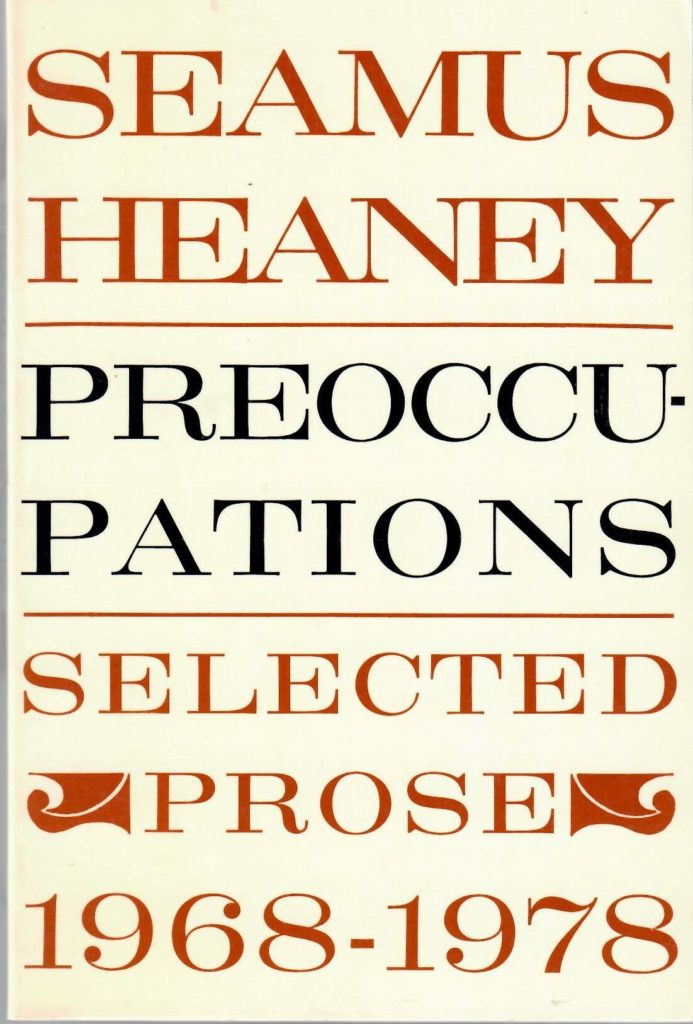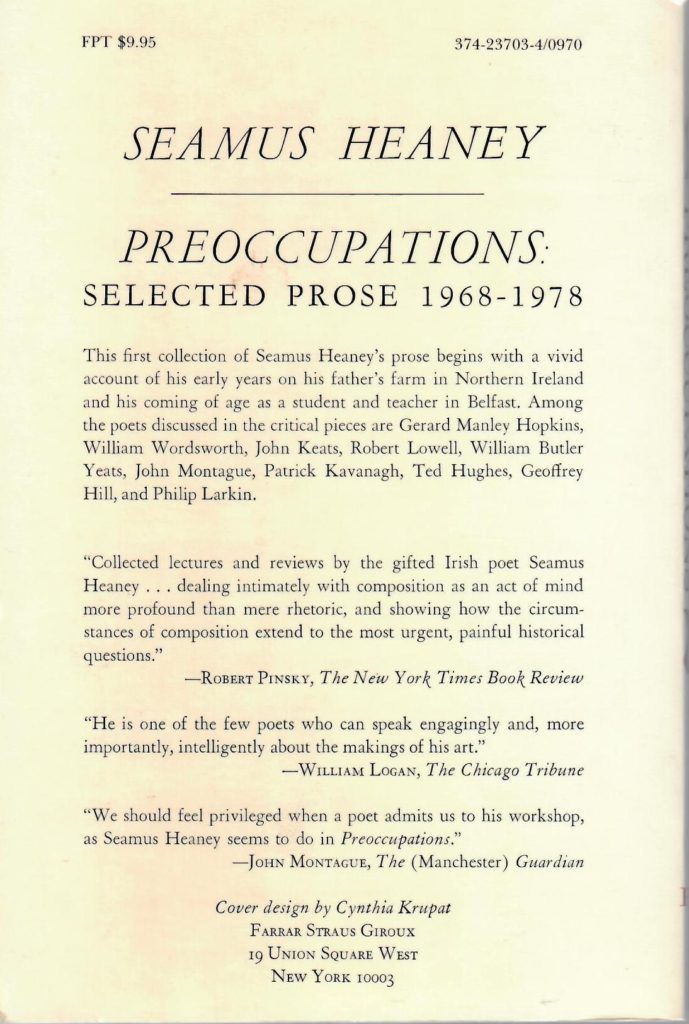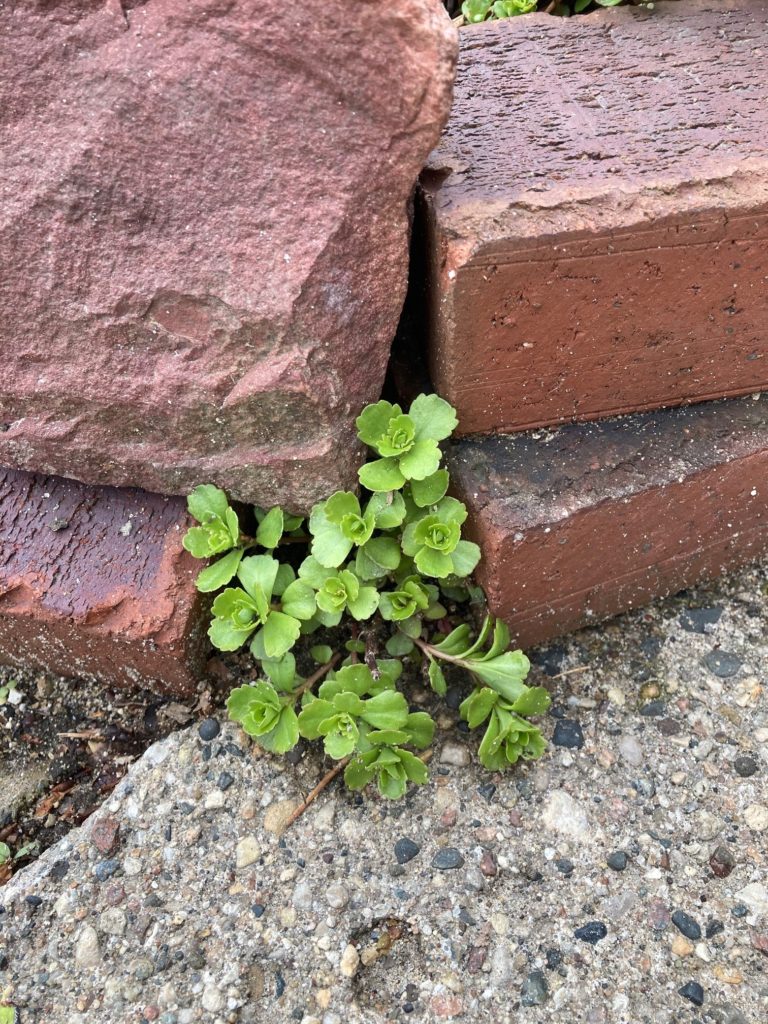It was (again!) in graduate school that I discovered the early, earth-shaking poetry by vigorous Irishman Seamus Heaney. His first four books had then been published, and I was especially taken with his first book, Death of a Naturalist, and North, which managed compelling lyrics by using deeply felt sense of place, as inflected through history and current events at their most violent by asking, literally and archaeologically where the bodies (of language, of national power, of people buried in the preserving Irish peat bogs during the Dark Ages) lay buried and then “digging” them up. (Indeed, his early poem, “Digging,” has the cadences and force of a personal manifesto for a life of devotion–different in form from his father and forebears, but connected to theirs–to poetry and Ireland.)
His 1995 Nobel Prize for Literature in 1995 was given “for works of lyrical beauty and ethical depth, which exalt everyday miracles and the living past.” Certainly, he deserves that citation and the world’s foremost accolade for literature. I find his prose reflections equally compelling. In this collection, Preoccupations: Selected Prose 1968-1978 (Farrar, Straus, Giroux, 1980), I wonder if the title is a sly reference to his sense of history and place, to the Ireland before the British occupation? The essays are grouped into three sections. The first contains two essays, “Mossbawn” and “Belfast”, both autobiographical evocations of place and the sense of depth and power Heaney gained from learning to read and from reading deeply and critically in the English language tradition as well as deep dives into Irish language, history, and culture –both in a small hamlet and in vigorous, riven city.


The other two sections treat the word of other poets and of poetic conventions and explorations. The longer pieces were originally conceived as lectures, and in all of them a sense of voice comes through strong and clear, scholar and practitioner. I am especially drawn to his essay “Yeats as an Example?” which elucidates Yeats’ public and private faces, as he wrestle to forge his own sense as a poet and patriot, much as Heaney did in his own era. Among the many intersections between Yeats’ life and work considered, I am still thinking about what Heaney says about the connections between Yeats’ esoteric (and sometimes just plain odd) enthusiasms and his work as a poet and public person. They were not affectations or mere silly costumes or posing, Heaney decides, but sprang from Yeats love of poetry, of making, and of forging himself as well as his poems along the lines of inspiration. To quote Heaney, “…his performances…manifested themselves in the service of creative action. The longer we think of Yeats, the more he narrows the gap which etymology has forced between mystery and mastery.”
More than forty years since their publication, these essays seem more relevant to ever. They are, as we all hope to do, aging well. Why? First, care is taken with every word, the sounds and rhythms of every phrase, with an intention to clarify rather than to obscure. And second, the generosity of spirit and depth of learning Heaney means that no topic is treated superficially or lightly; rather, each is considered in its own particulars and in its historical context. The reader comes away well paid for the investment of time spent–informed, engaged, energized, and refreshed, as well as entertained.
Context for Poem “Bamboo: Meditation on Long Ago and Far Away”:
Maybe it is all the thinking this month about poets whose work I first encountered in graduate school? Or comfort of knitting on these grey days? Or the awakening garden? In any case, today the poem inspired by the Letter “B” references all of these facets of my world. The Snow Bamboo is plausible but not, I think, true. Perhaps Tim and I will plant some in our garden this year! All the other details are, I believe, true.

Until tomorrow,
LESLIE
